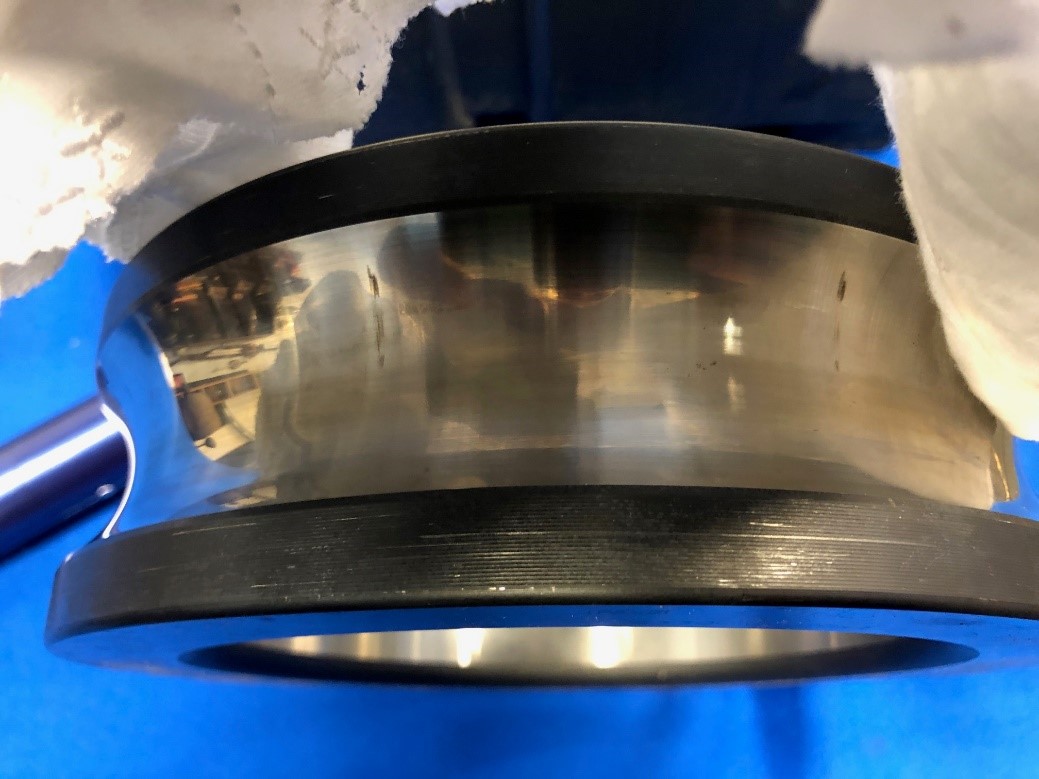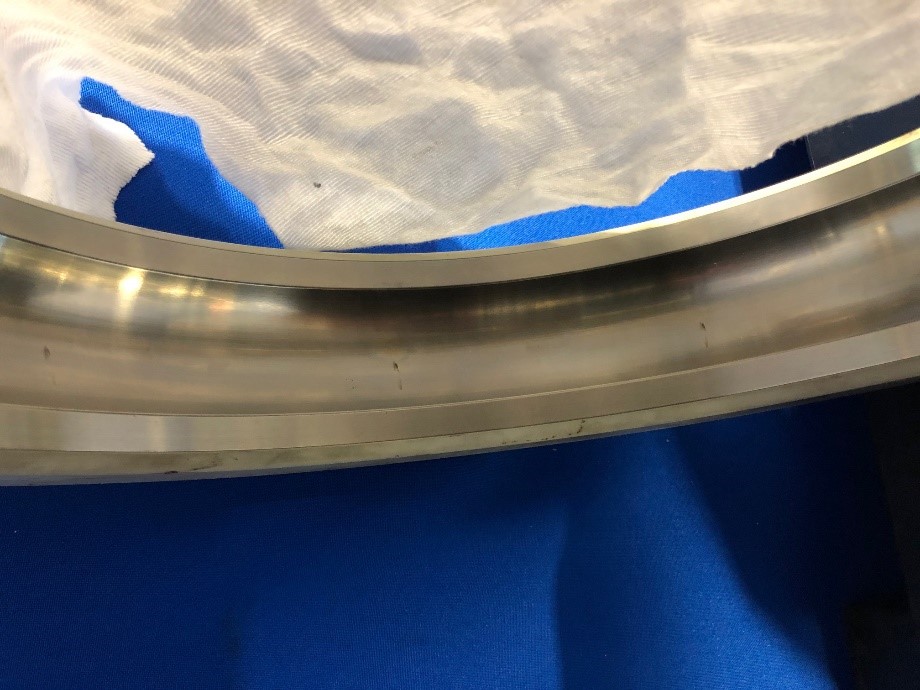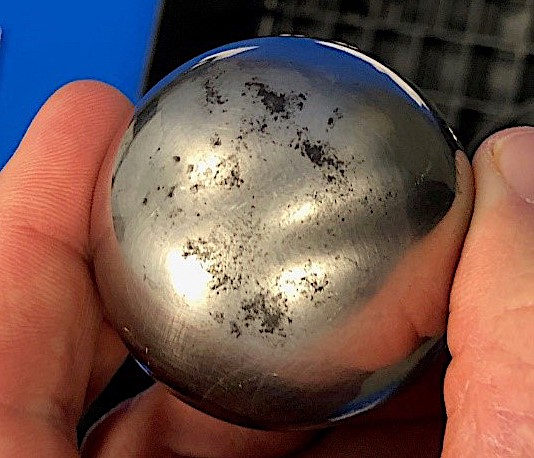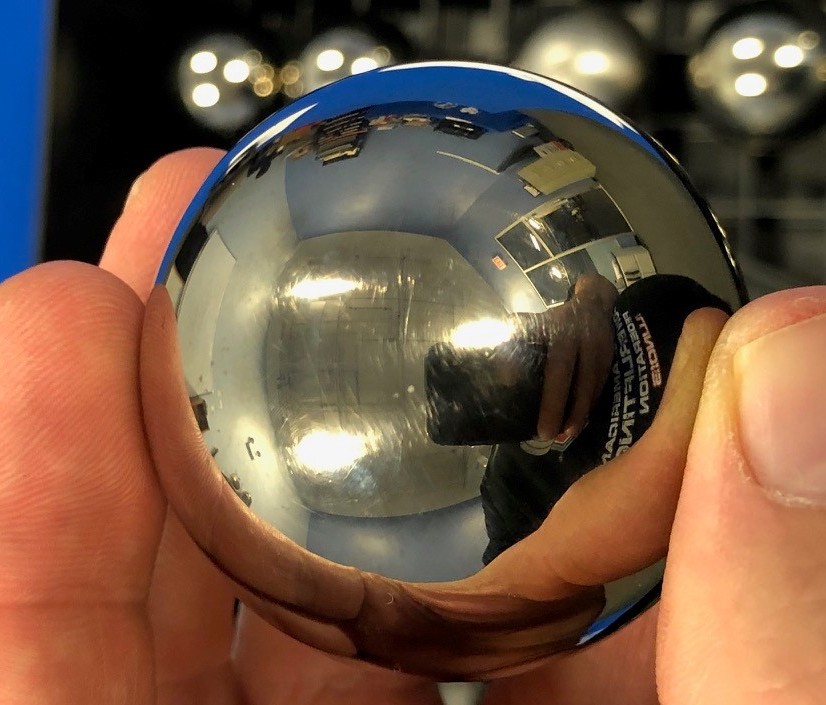In this article, we use Electrical Signature Analysis (ESA) to evaluate a drive-end bearing in a 1210 rpm, 1.5 MW, 690 Vac wind-turbine generator. The problematic 6330M bearing was found during routine analysis of a wind-power site. One of the challenges of projecting component failures in a wind-power generator and drivetrain is the turbine location and general wind conditions. The variable speeds, loading, and ambient temperatures all impact the reliability of the machine and components due to torsional and thermal stresses.
A majority of today’s wind turbines are an interesting combination of blades and hub; shaft and main bearings that operate between 14 and 20 rpm; a gearbox that starts from the blade-side with at least one planetary gear set, low-speed, mid-speed and high-speed gears, and shaft; a coupling; and a generator that’s turning in the range of 4 or 6-poles. Depending on a wind turbine’s design, data is collected either at the base or in the tower nacelle.
On the wind turbine in question, a variety of voltage, current, and power-signature analyses were performed with an EMPATH data collector, a continuous analyzer that can provide information on all of the bearings in the system, as well as the gears, rotor and stator components, loose connections, and other issues. While analysis of data from other turbines at the site had detected no significant problems, the software red-flagged this particular tower as having a series of issues, including in the drive-end bearing of the generator. For the purposes of this article, we are focusing on the manual analysis of the bearing.
DATA ANALYSIS
Figures 1 and 2, respectively, show the low- and high-frequency electrical-signature spectra. As indicated by the red arrows in Fig. 2, the bearing peaks were not excessive. Nevertheless, if a bearing issue is detected through ESA, it should be investigated, verified, and acted upon. In this case, the bearing was replaced and sent to the MotorDoc lab for evaluation.
 Fig. 1. Low-frequency electrical-signature spectra.
Fig. 1. Low-frequency electrical-signature spectra.
 Fig. 2. High-frequency electrical-signature spectra with bearing peaks (red arrows).
Fig. 2. High-frequency electrical-signature spectra with bearing peaks (red arrows).
Figures 3 and 4 show changes in the electrical-signature spectra after the bearing was replaced and the generator aligned.
 Fig. 3. Low-frequency electrical-signature spectra after bearing replacement.
Fig. 3. Low-frequency electrical-signature spectra after bearing replacement.
 Fig. 4. High-frequency electrical-signature spectra after bearing replacement.
Fig. 4. High-frequency electrical-signature spectra after bearing replacement.
MANUAL EVALUATION
Figures 5, 6, 7, 8, and 9 show the old disassembled bearing (without its cage) after it arrived at the MotorDoc facility.
False brinnelling with signs of light thrust can be seen on the inner and outer races (Figs. 6 and 7). One of the balls had severe damage, which could have been caused by either a damaged cage or lubrication issues (Fig. 8). Without access to the cage or a sample of the lubricant, however, a final diagnosis was not possible. The other balls were undamaged (Fig. 9).
 Fig. 6. Inner-race false brinelling with signs of light thrust on the old bearing.
Fig. 6. Inner-race false brinelling with signs of light thrust on the old bearing.
 Fig. 7. Outer-race false brinelling with signs of light thrust on the old bearing.
Fig. 7. Outer-race false brinelling with signs of light thrust on the old bearing.
 Fig. 8. One ball of the old bearing was found to be defective.
Fig. 8. One ball of the old bearing was found to be defective.
 Fig. 9. Other balls in the old bearing did not have issues.
Fig. 9. Other balls in the old bearing did not have issues.
Interestingly, while the old bearing had been in operation for only a few months before it was changed out, the replacement bearing has operated for more than six months since being installed. Subsequent tests have been acceptable.
BOTTOM LINE
One of the strengths of Electrical Signature Analysis testing is the ability to see an entire system at once, versus point-testing with vibration or other similar technologies. Note that individual bearings of different sizes and speeds will provide different signatures that impact the air gap of the electric motor or generator based upon bearing multipliers. Such values are trendable for faults, but bearing issues detected with Electrical Signature Analysis tend to be in the later stages of failure.TRR
ABOUT THE AUTHOR
Howard Penrose, Ph.D., CMRP, is Founder and President of Motor Doc LLC, Lombard, IL and, among other things, a Past Chair of the Society for Reliability and Maintenance Professionals, Atlanta (smrp.org). Email him at howard@motordoc.com, or info@motordoc.com, and/or visit motordoc.com.
Tags: wind turbines, generators, bearings, Electrical Signature Analysis, ESA, reliability, availability, maintenance, RAM



